Abstract
The in vivo photochemical activity of photosystem II was inferred from modulated chlorophyll fluorescence and photoacoustic measurements in intact leaves of several plant species (Lycopersicon esculentum Mill., Solanum tuberosum L., Solanum nigrum L.) exposed to various environmental stresses (drought, heat, strong light) applied separately or in combination. Photosystem II was shown to be highly drought-resistant: even a drastic desiccation in air of detached leaf samples only marginally affected the quantum yield for photochemistry in photosystem II. However, water stress markedly modified the responses of photosystem II to superimposed constraints. The stability of photosystem II to heat was observed to increase strongly in leaves exposed to water stress conditions: heat treatments (e.g. 42°C in the dark), which caused a complete and irreversible inhibition of photosystem II in well-watered (tomato) leaves, resulted in a small and fully reversible reduction of the photochemical efficiency of photosystem II in drought-stressed leaves. In vivo photoacoustic data indicated that photosystem I was highly resistant to both heat and water stresses. When leaves were illuminated with intense white light at 25°C, photoinhibition damage of photosystem II was more pronounced in water-stressed leaves than in undesiccated controls. However, in nondehydrated leaves, photoinhibition of photosystem II was strongly temperature dependent, being drastically stimulated at high temperatures above 38 to 40°C. As a consequence, when exposed to strong light at high temperature, photosystem II photochemistry was significantly less inhibited in dehydrated leaves than in control well-hydrated leaves. Our results demonstrate the existence of a marked antagonism between physicochemical stresses, with water stress enhancing the resistance of photosystem II to constraints (heat, strong light at high temperature) that are usually associated with drought in the field.
Full text
PDF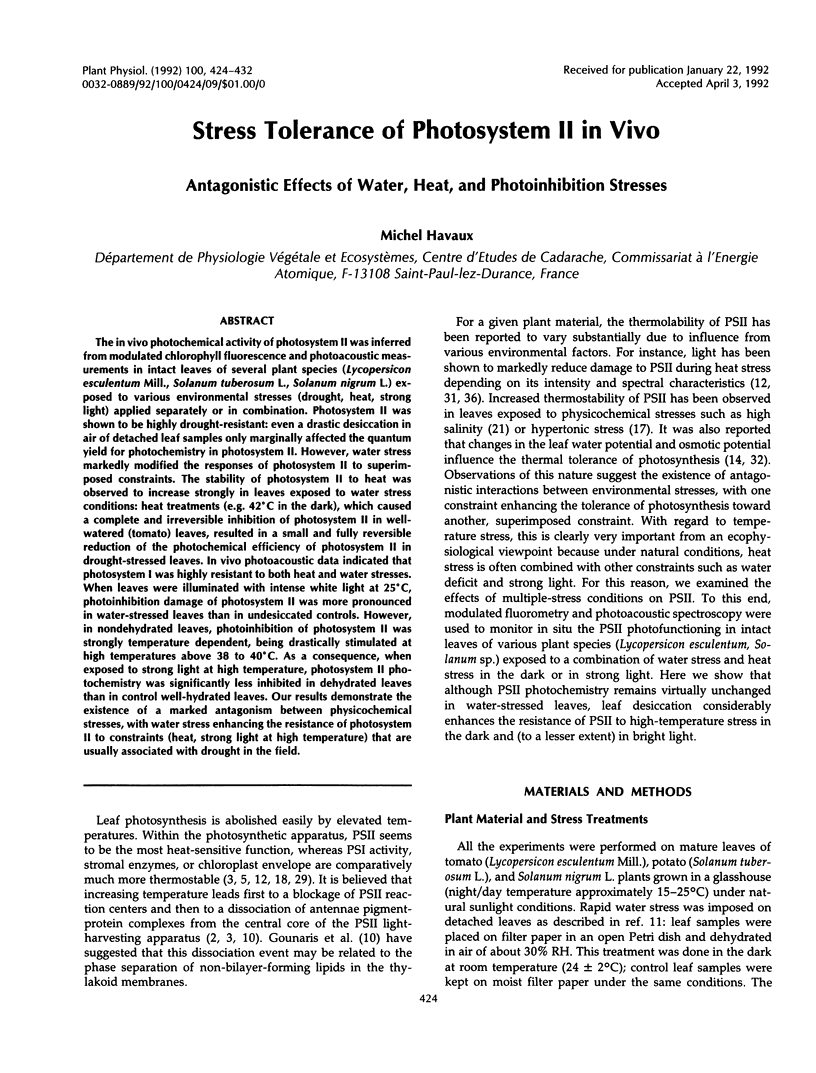
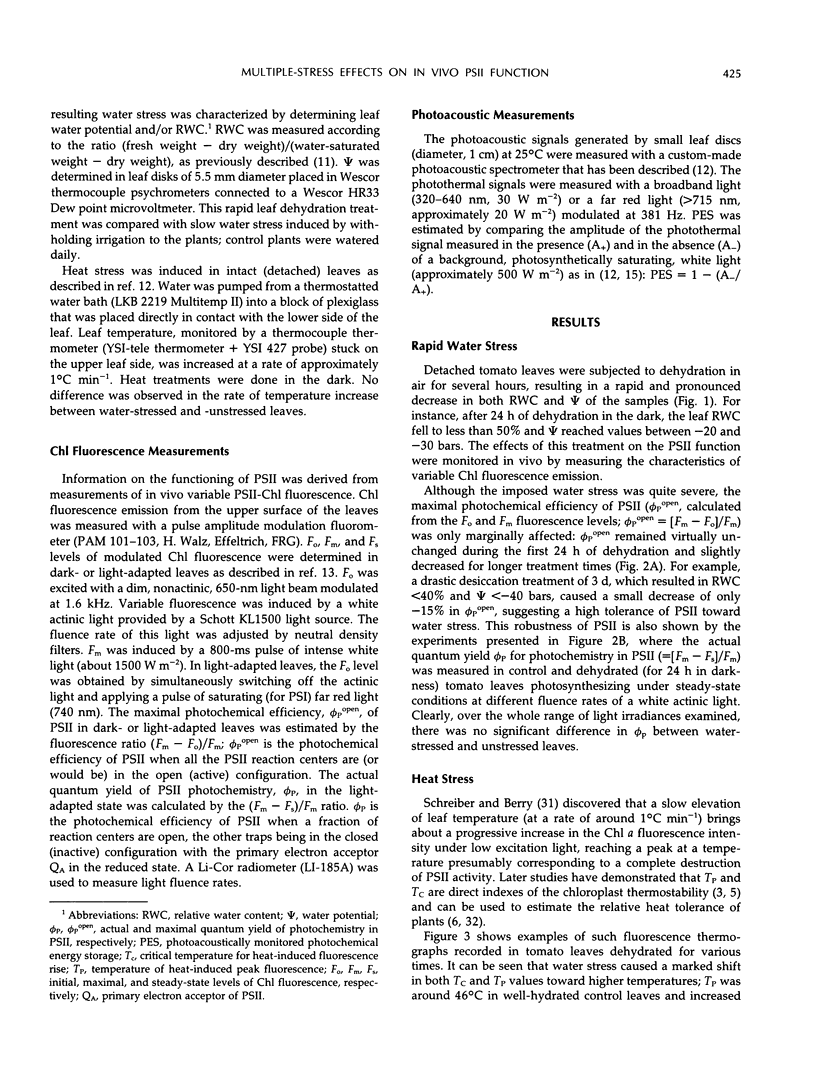
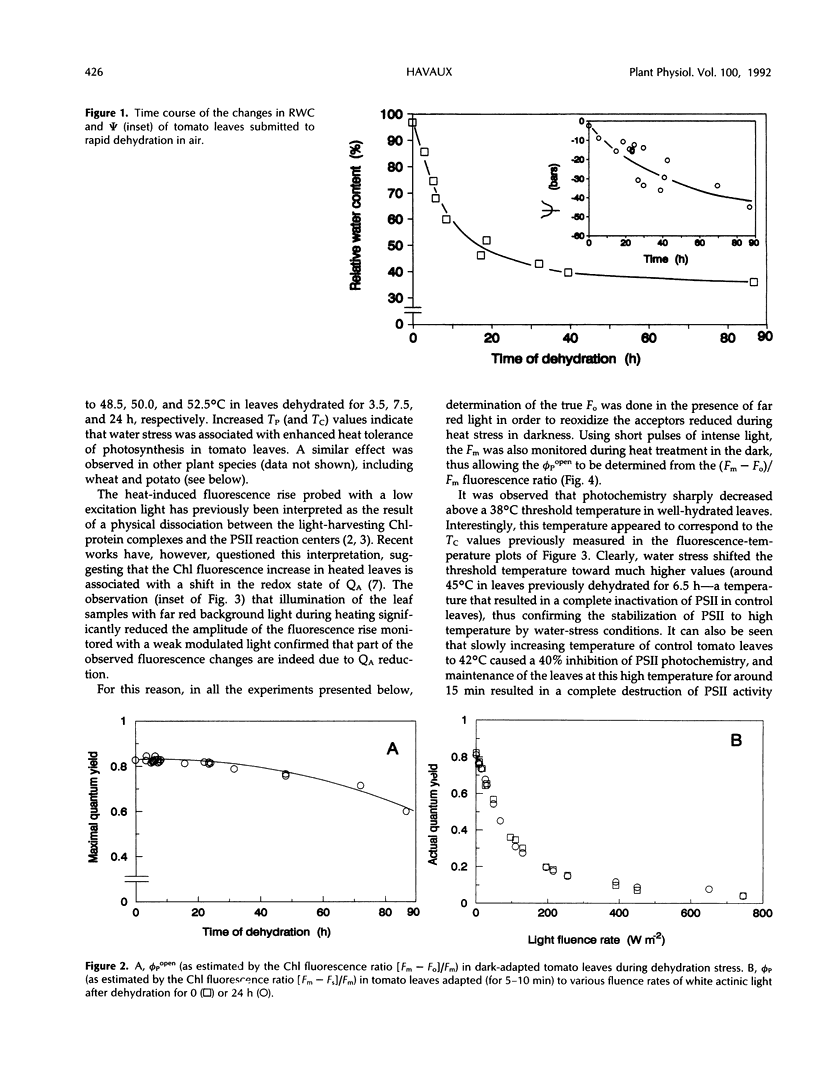
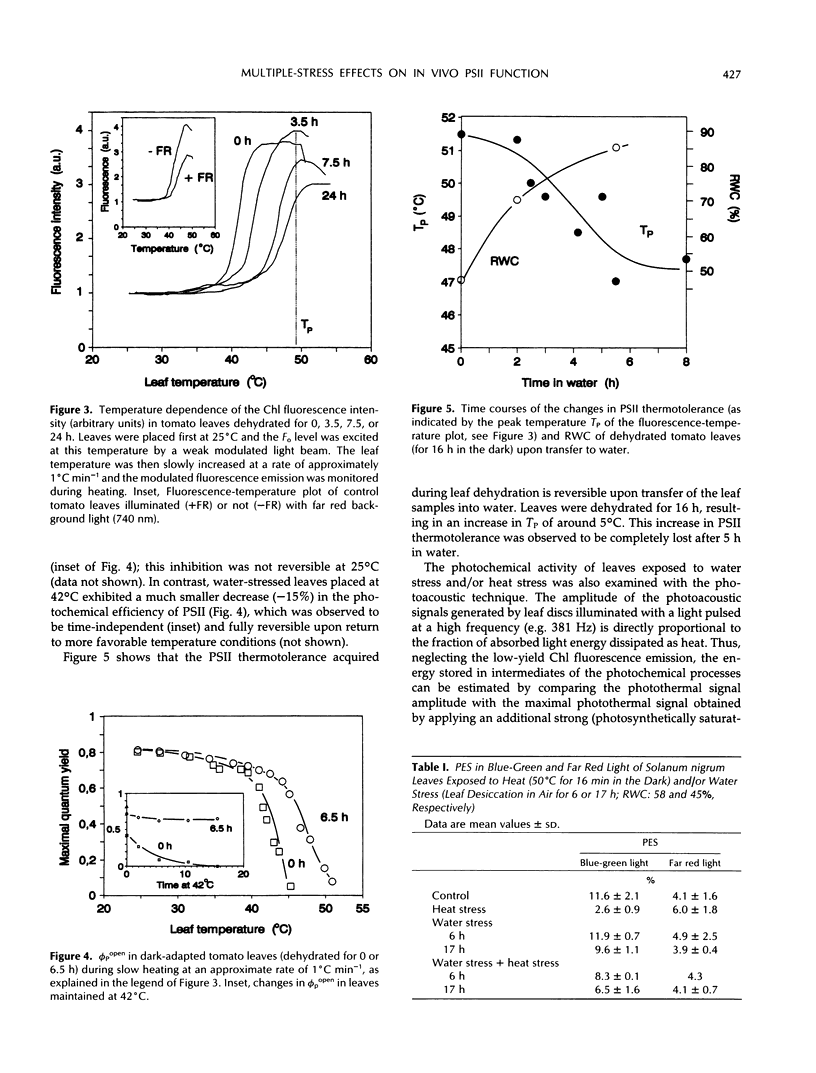
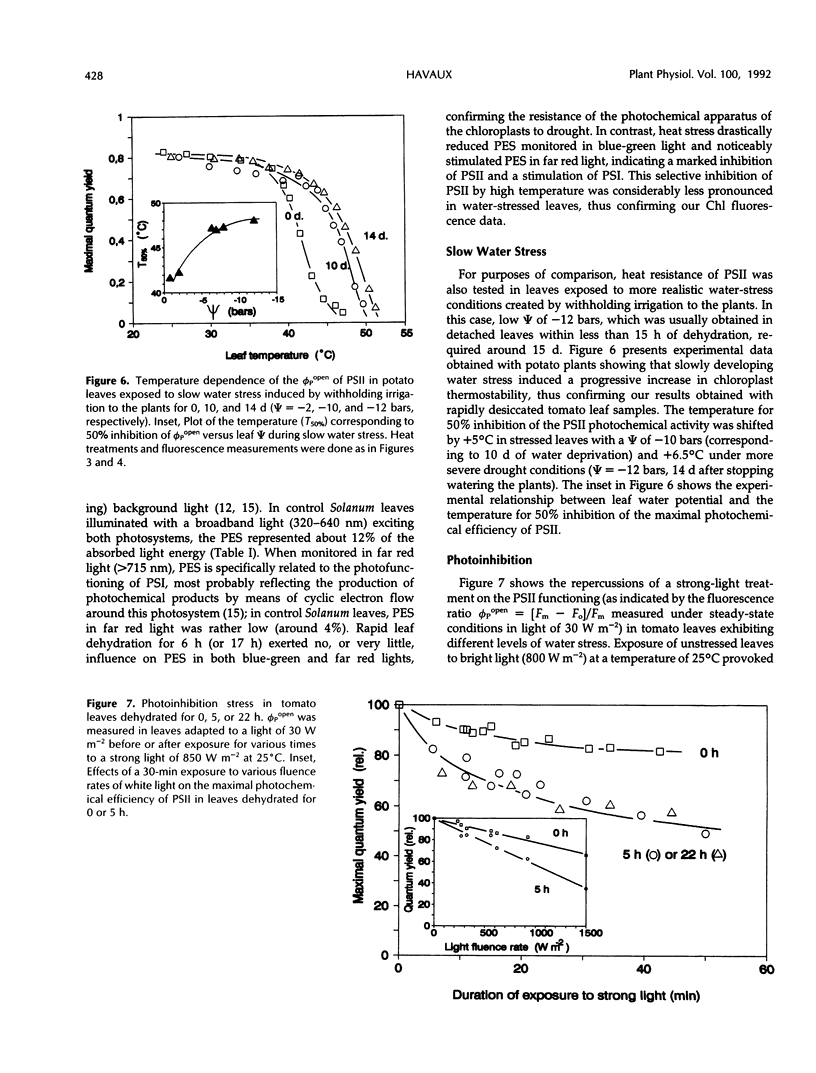
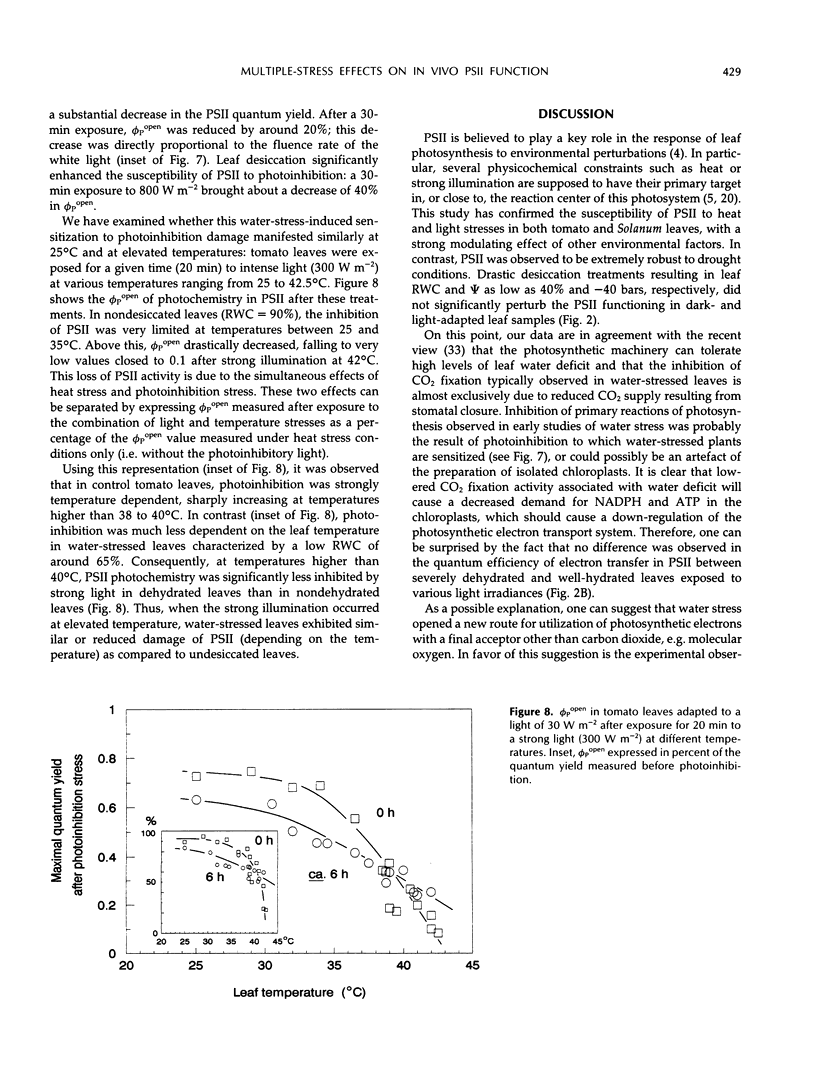
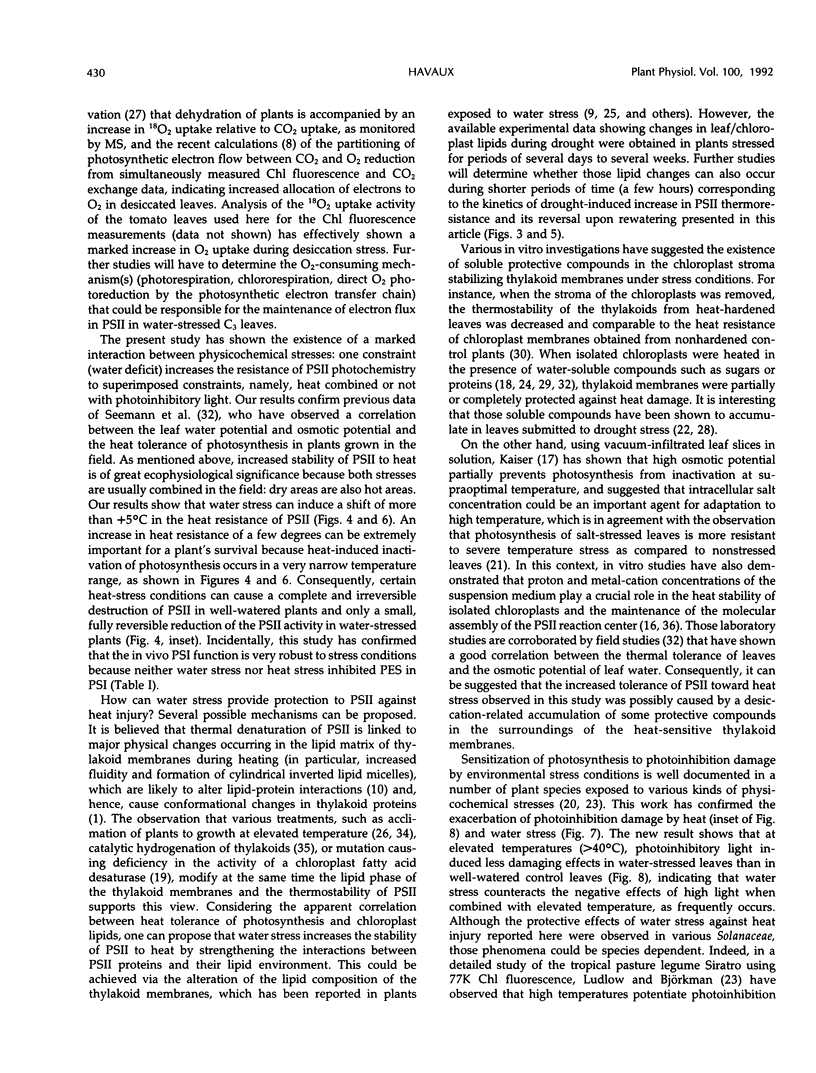


Selected References
These references are in PubMed. This may not be the complete list of references from this article.
- Armond P. A., Björkman O., Staehelin L. A. Dissociation of supramolecular complexes in chloroplast membranes. A manifestation of heat damage to the photosynthetic apparatus. Biochim Biophys Acta. 1980 Oct 2;601(3):433–443. doi: 10.1016/0005-2736(80)90547-7. [DOI] [PubMed] [Google Scholar]
- Armond P. A., Schreiber U., Björkman O. Photosynthetic Acclimation to Temperature in the Desert Shrub, Larrea divaricata: II. Light-harvesting Efficiency and Electron Transport. Plant Physiol. 1978 Mar;61(3):411–415. doi: 10.1104/pp.61.3.411. [DOI] [PMC free article] [PubMed] [Google Scholar]
- Havaux M., Canaani O., Malkin S. Photosynthetic responses of leaves to water stress, expressed by photoacoustics and related methods : I. Probing the photoacoustic method as an indicator for water stress in vivo. Plant Physiol. 1986 Nov;82(3):827–833. doi: 10.1104/pp.82.3.827. [DOI] [PMC free article] [PubMed] [Google Scholar]
- Herbert S. K., Fork D. C., Malkin S. Photoacoustic measurements in vivo of energy storage by cyclic electron flow in algae and higher plants. Plant Physiol. 1990 Nov;94(3):926–934. doi: 10.1104/pp.94.3.926. [DOI] [PMC free article] [PubMed] [Google Scholar]
- Kunst L., Browse J., Somerville C. Enhanced thermal tolerance in a mutant of Arabidopsis deficient in palmitic Acid unsaturation. Plant Physiol. 1989 Sep;91(1):401–408. doi: 10.1104/pp.91.1.401. [DOI] [PMC free article] [PubMed] [Google Scholar]
- Molotkovsky Y. G., Zheskova I. M. The influence of heating on the morphology and photochemical activity of isolated chloroplasts. Biochem Biophys Res Commun. 1965 Aug 16;20(4):411–415. doi: 10.1016/0006-291x(65)90592-9. [DOI] [PubMed] [Google Scholar]
- Seemann J. R., Downton W. J., Berry J. A. Temperature and leaf osmotic potential as factors in the acclimation of photosynthesis to high temperature in desert plants. Plant Physiol. 1986 Apr;80(4):926–930. doi: 10.1104/pp.80.4.926. [DOI] [PMC free article] [PubMed] [Google Scholar]
- Süss K. H., Yordanov I. T. Biosynthetic cause of in vivo acquired thermotolerance of photosynthetic light reactions and metabolic responses of chloroplasts to heat stress. Plant Physiol. 1986 May;81(1):192–199. doi: 10.1104/pp.81.1.192. [DOI] [PMC free article] [PubMed] [Google Scholar]


